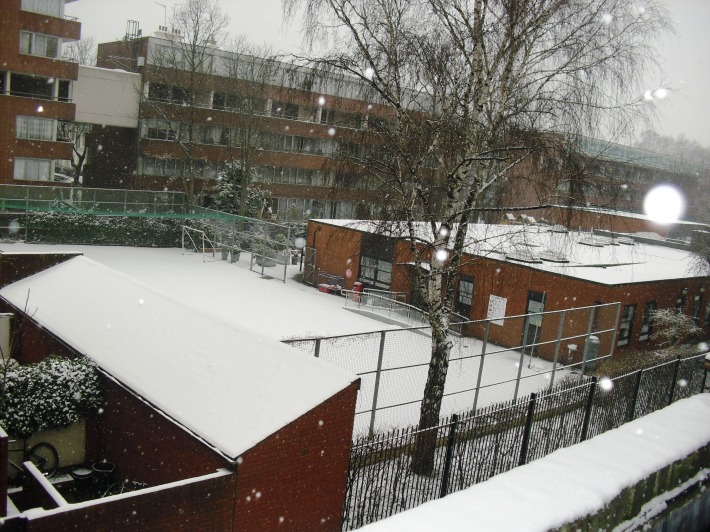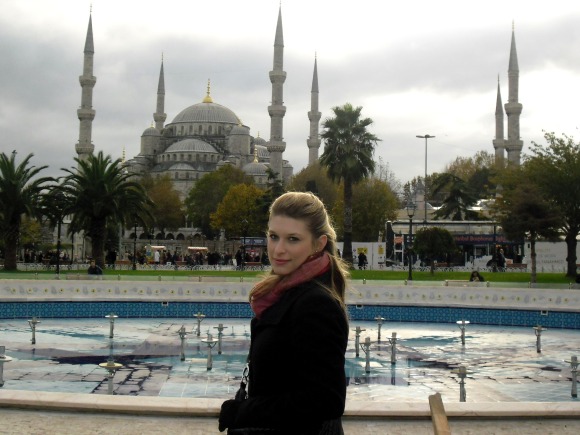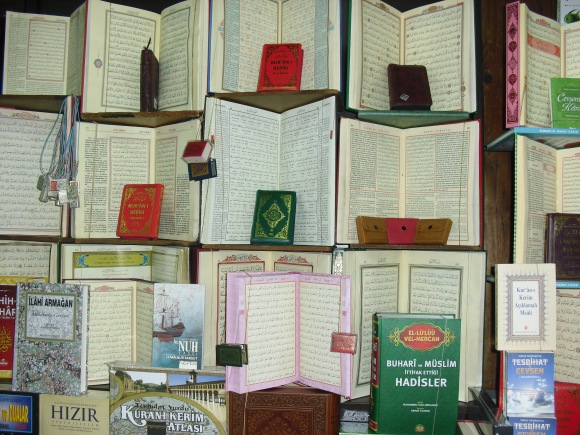CASE STORY by GIOVANNI TIZIAN and FABIO TONACCI
Duisburg, province of Reggio Calabria
The ‘Ndrangeta find a second home
SOURCE: http://inchieste.repubblica.it/en/repubblica/rep-it/italian-stories/2012/06/22/news/duisburg_province_of_reggio_calabria_the_ndrangeta_find_a_second_home-37716458/
From the province on the Straits of Messina, the organization has spread throughout most of the Old World: Spain, France, Switzerland, the Netherlands and Eastern Europe. But especially, Germany. 80% of drug trafficking is in its hands. Dominating the local areas as it does in the motherland. Even if the Germans apparently haven’t noticed “Good evening!” yells the godfather. “Good evening”, the six local men sitting around the table chorus in response. Salvatore Femia takes a deep breath and then recites the formula. “My belly is a tomb, my chest is a shovel, with words of humility the company is formed.” The summit of the family of the ‘Ndrangheta, the Calabrian-based mafia, can now begin. In the back room of Femia’s restaurant the “Rikaro”, the talk is all of contracts and of doing business with the Russians. They mention “Mamma”. The police bugs also record the muffled voices of the customers in the next room of the restaurant at 3 Hegaustrasse. It is eight o’clock in the evening of 20 December, 2009. And in Singen, a small town of 45,000 in southern Germany, 2,000 km north of “Mamma” Reggio Calabria, it is a chilly evening. How much do we really about know the European infiltration of Italy’s most powerful mafia organisation, which is catching up to that of Russia in terms of turnover?
Germany, province of Reggio Calabria
The ‘Ndrangheta now controls 80% of drug trafficking in Europe. According to the National Anti-Mafia Directorate it earns 27 billion euros a year from drugs alone. It has colonized the whole of the EU using two basic methods: the long-established emigration from Calabria and business. Importing and distributing cocaine and heroin, it invests in real estate and tourist resorts, buying up companies and shares, practising extortion and dealing in arms. U. S. government experts rank this criminal multinational fourth in the list of the world’s most dangerous organizations, after Al Qaeda, the PKK and the Mexican narco- traffickers. And Germany is its second home. The province of Constanta, where Singen is located, is home to 7,000 immigrants, 40% of Calabrian origin. They arrived on German soil as part of the great wave of 1959 that brought 200,000 Italians to the industrial districts of North Rhine-Westphalia. Radolfzell, a town of 33,000, is another Singen. On the surface it seems as placid as the waters of Lake Constance, on which stands. But an anonymous building on Öschlestrasse was the meeting place for some of the members of the ‘Ndrangheta arrested in the Reggio Calabria anti-mafia prosecutor’s Crimine 2 inquiry. An inquiry that told Germany a truth that it had ignored, even if it had been under its nose. And that was that the Duisburg massacre of mid-August 2007, the last act of the San Luca feud that spilt the blood of the six members of the Pelle-Vottari ‘ndrina, or branch, was no isolated incident. It was not just italienish stuff. As early as 2006 a report by the Bundesnachritendienst, the German secret services, had pointed out that the ‘Ndrangheta had made a quantum leap, buying shares in Gazprom and other energy companies. Three years later, in 2009, the Federal Police stated that in Germany there were at least 230 ‘ndrine with 1800 members, mostly located in Bavaria, Hesse and North Rhine-Westphalia. Five locali or families had set up in Ravensburg, Frankfurt, Engen, Rielasingen and Singen. The Pelle, Nirta-Strangio, Vottari and Romeo families, all from San Luca, had invested millions of euros in Berlin, Cologne and Munich. In Cologne it was the Morabito from Africo, and in Stuttgart a group from Crotone had – it was suspected – set up a locale. “As well as investing”, says Michele Prestipino, deputy anti-mafia prosecutor of Reggio Calabria, “they control the area through extortion and intimidation, just as in Calabria and around Milan. They demand protection money, and not only from Calabrian immigrants. They decide who should get the vote of Italians abroad.” But how is a locale created abroad? And what relationship does it have with the gangs in Italy?
Mamma is always Mamma
“The French, German and Spanish governments don’t want to admit to being infected by the ‘Ndrangheta because organised crime brings money with it”, claims Luigi Bonaventura, sitting at the dining room table in the house in Termoli given to him by the witness protection programme. (“Yes, you can write that I’m in Termoli, because everyone knows by now, including those who are trying to kill me.”) Bonaventure is not just any turncoat. Five years ago he was the head of the Vrenna-Bonaventure gang of Crotone, then decided to collaborate with the authorities. “The ‘Ndrangheta has spread everywhere, but its head remains in the province of Reggio Calabria, the “Mamma” is always there”, he says. “And its real strength lies in its ability to adapt. It only takes two or three people to form a ‘ndrina. At first they have a certain autonomy, they may experiment with different criminal models, form alliances with the local underworld, adopt different strategies. But once the business reaches a certain volume, there is no escape…” Criminal models with variable geometry, but always within the boundaries drawn up by the patriarchs of the Organization. And whereas a shipment of cocaine or a property investment may not require the approval of head office, the opening of a local branch, the awarding of promotion or regulating relations between foreign clans must be discussed at the Reggio Calabria Crimine, a sort of underworld board of directors that coordinates the ‘Ndrangheta worldwide. “They have set up dozens of locali in Germany. They have money in Switzerland”, Bonaventure continues, “in the Netherlands and Belgium they control the ports. On the Côte d’Azur they have villas; they are investing in the tourism sector in Bulgaria; in the Balkan they control the drug routes. It’s not difficult to see how the ‘Ndrangheta spreads; just follow the money.”
Swiss companies and Italian Real Estate
And the wallets full of dirty money in the pockets of the bosses, estimated by Italian research institute Eurispes to be worth 44 billion euros in 2008, lead to Switzerland, to the banks and the world of high finance where the Ndrangheta’s loot is hidden. Prosecutor Michele Prestipino explains: “Some clans from the Tyrrhenian coast open companies in Zurich which hold securities and real estate in Italy, to evade the taxman and controls.” Italian anti-mafia investigators have identified two clans in Zurich and Frauenfeld. The “Crimine 2” investigation uncovered a character, “Ntoni lo svizzero” a. k. a. Antonio Nesci, distant cousin of the head of the Singen clan, Salvatore Femia. Investigators listened to him on the phone explaining that in Mossendorf, a Swiss village with a population of 3,000, he can count on five people, “men at my disposal”, he says. In the valleys around Zurich the gang leaders are mainly out on bail, free to manage companies and restaurants in their own names. Like Ferrazzo, the boss of the Catanzaro ndrina, in the Canton of Zurich. The money and interests of the Bellocco family of Rosarno and the Gallico and Parrello families of Palmi pass through Switzerland. These are the same clans that, a few thousand miles to the south, divided up the contracts in the years of the construction of the Salerno-Reggio Calabria motorway.
Allied with everyone and no one
“The ‘Ndrangheta has no problem doing business with people of every race and nation”, turncoat Saverio Morabito explained a few years ago to magistrates. It works with and exploits of all foreign criminal organisations, but never forms any real alliances. It is within this context, opportunistic and parasitical, that the networks created to control the major ports of Rotterdam, Antwerp, Barcelona and Piraeus, the entry points for drugs coming into Europe, must be understood. A recent confidential report by the Dutch police states that: “Between Amsterdam, Hoofddorp, Diemen and Amstelveen there are at least twenty Calabrian bosses and about a hundred ‘Ndrangheta gang members dealing in weapons, heroin, cocaine and pills. They have luxury apartments in Minerva Square in Amsterdam and carry out their business undisturbed because the Dutch government is not aware of their criminal pasts.” They are connected to the Nirta-Strangio and Romeo families of San Luca (Giovanni Strangio, a leading figure in the Duisburg massacre, was arrested March 12, 2009 here in the suburb of Diemen) and to the ndrine of Ciro and Corigliano Calabro. The report says that the ‘Ndrangheta has contacts with the five most dangerous criminals in the Netherlands. And that is not all. To control the port of Rotterdam, where 30% of all the cocaine from Colombia arrives (about 36,000 kilos comes in every year on ships, hidden in containers of fruit), it exploits a strategic alliance with the Albanian mafia. And it obtains information and impunity by infiltrating its people into the police, people like Barbara Fun, a 39-year-old Dutch woman who, thanks to friends in the secret services, was able to work in the Haaglanden Regional Police until 2010, despite being arrested in Portugal in 1992 along with two members of the Di Giovane-Serraino clan. The ‘Ndrangheta has been talking to the Russian mafia since the fall of the Berlin Wall. The “language” is always the same, weapons and cocaine. On the Balkan drug route, which starts in Afghanistan and passes through Greece, Romania, Albania and the countries of the former Yugoslavia, the ‘Ndrangheta has links to all the indigenous criminal groups. The mafia of Serbia-Montenegro offered to deliver heroin and cocaine directly to the Calabrese in Milan. The Magna Charta operation of the Carabinieri Special Operations Group, which on 4 June last year led to the arrest of thirty smugglers across Europe, exposed the axis that was created for transport by sea between a Piedmont gang affiliated to the Bellocco of Rosarno and the businessman Evelin Banev, suspected of being one of the leaders of the Bulgarian mafia. Luigi Bonaventura told Repubblica: “My uncle Sergio Vrenna also has business with the Bulgarian mafia, sharing with them the “code of the knife”, the mafia code of honour. Just go and look at the Calabrian real estate investments in the Black Sea coastal resorts. All ours.” And then there is Barcelona.
Barcelona, the new Marseille
The Catalan capital is the new crossroads of the European mafias. “We are all there, it’s like Marseille in the 80s”, members of the ‘Ndrangheta have been saying for years. In Barcelona we have the Calabrian clan of the Piromalli-Mole of Gioia Tauro, the Camorra clans of the Licciardi Secondigliano, the Di Lauro clan and the Frizziero of Naples. Then there are the emissaries from the Mexican and Colombian drug traffickers, whose cocaine joint venture with the Ndrangheta is now established and operating smoothly. Here in the restaurants around the Ramblas they fix the price of the large shipments of drugs arriving from South America. The last to end up in jail was Carmelo Gallico, 48, known as “U Picu”, head of the gang of the same name from Palmi. He was hiding in a house in the university district of Barcelona ?? and fictitiously investing in property in Italy. Spanish soil was rendered fertile by a particular character: Santo Maesano, a. k. a. Hoffa, a. k. a. the Professor, the head of the Maesano-Pavaglianiti Calabrian families. Francesco Forgione talks about him in his book “Mafia Export”. Having moved to Spain in the late nineties, Maesano was one of the biggest drug traffickers in the world. From Madrid’s Valdemoro prison he conducted business with his contacts in Colombia and Venezuela, bought weapons and entertained his deputy, Vincenzo Romeo. For him, Valdemoro prison was more like a rest home that a real prison. In Spain there is no special regime for mafia prisoners like Italy’s Article 41bis. In Switzerland crime bosses move around openly. In Germany even the wives of arrested ‘Ndrangheta members receive unemployment benefit of 365 euros a month. “And they are exempt from paying rent”, says Vito Giudicepietro, a representative of the Inca-CGIL welfare office in Singen, a point of reference for the Italian community. How is this possible? How is the ‘Ndrangheta being combated abroad?
In Europe the ‘Ndrangheta does not exist
The problem is that, technically, the mafia does not exist in the legal codes of European states. The crime of criminal association of a mafia nature only exists in Italy, introduced in 1982. Elsewhere belonging to a gang, being part of a recognized ‘ndrina, it is not a crime per se. Unless a specific crime is committed the police cannot seize mafia assets nor issue detention orders. “Organized crime is growing and we are blind”, was how French Police Commissioner Jean-Francois Gayraud summed up the situation to the European anti-mafia commission few days ago. According to Prestipino, “The lack of such laws is the biggest obstacle. In Europe, the institutions have trouble understanding the dangers of organised crime clans and their power to intimidate.” But something is changing. The DIA, the Italian Anti-Mafia Investigation Department, is increasingly being used as a model by other police forces. The 111 requests sent in 2011 by the DIA to other European countries (34 to Spain, 27 to the Netherlands, 14 to Germany and 7 to Belgium) met with the kind of collaboration they deserved. And in Brussels the Director-General of OLAF (the EU’s Anti-Fraud Office), Giovanni Kessler, after reporting an increase of 10% in investigations into economic and financial crime by organized gangs, adopted a new line. “We need a single European entity with the power to investigate and prosecute. We need a European Prosecution service.” 22 giugno 2012 © Riproduzione riservata



























